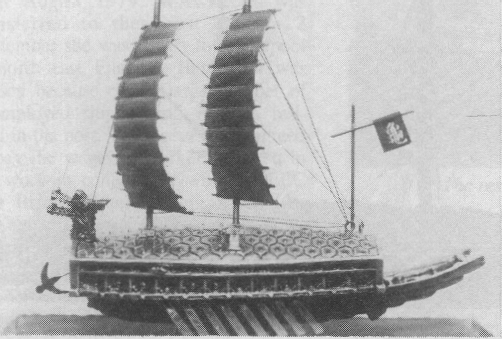- Author
- Date, John C., RANVR (Rtd)
- Subjects
- Early warships, Ship design and development
- Tags
-
- RAN Ships
- None noted.
- Publication
- June 1990 edition of the Naval Historical Review (all rights reserved)
 The Korean Turtle Ship is considered to be the first ironclad warship in the world, shaped like a turtle, invented and built by Admiral Yi Soon in 1592.
The Korean Turtle Ship is considered to be the first ironclad warship in the world, shaped like a turtle, invented and built by Admiral Yi Soon in 1592.
From a turtle ship rebuilt and kept by the Korean Naval Academy in Jinhae are the following structural details:
Length 113 feet Width 34 feet Height 21 feet
The deck was made firm with board two inches to a foot thick and it was roofed with iron plates on boards and covered with spikes and knives to prevent an enemy from boarding. The crew were thus well protected while still being able to view the enemy, permitting musketeers to fire through gunports.
The bow was shaped after the head of a dragon and the stern like the tail of a turtle. A gunport was installed at each end of the dragon head and six more on each side of the ship. It was from its general appearance that it derived its name of a ‘turtle ship’.
It had eight oars on each side and two sails used for manoeuvring with the masts designed to be raised or to lay down as necessary.
The ship was divided into many compartments for storage of iron products, metal works, guns, bows, arrows, spears, swords and other weapons and the rest of the spaces were quarters for the crew, with separate raised cabin areas for the captain and officers.
During the Japanese invasion of 1592-1598, under Admiral Yi’s command the turtle ships were engaged as the vanguard in a battle in Chinhae Bay near Pusan, when twelve of these ironclad turtle ships annihilated the Japanese fleet of 300 warships to gain supremacy of the surrounding seas, thus giving the Koreans a masterful victory.





